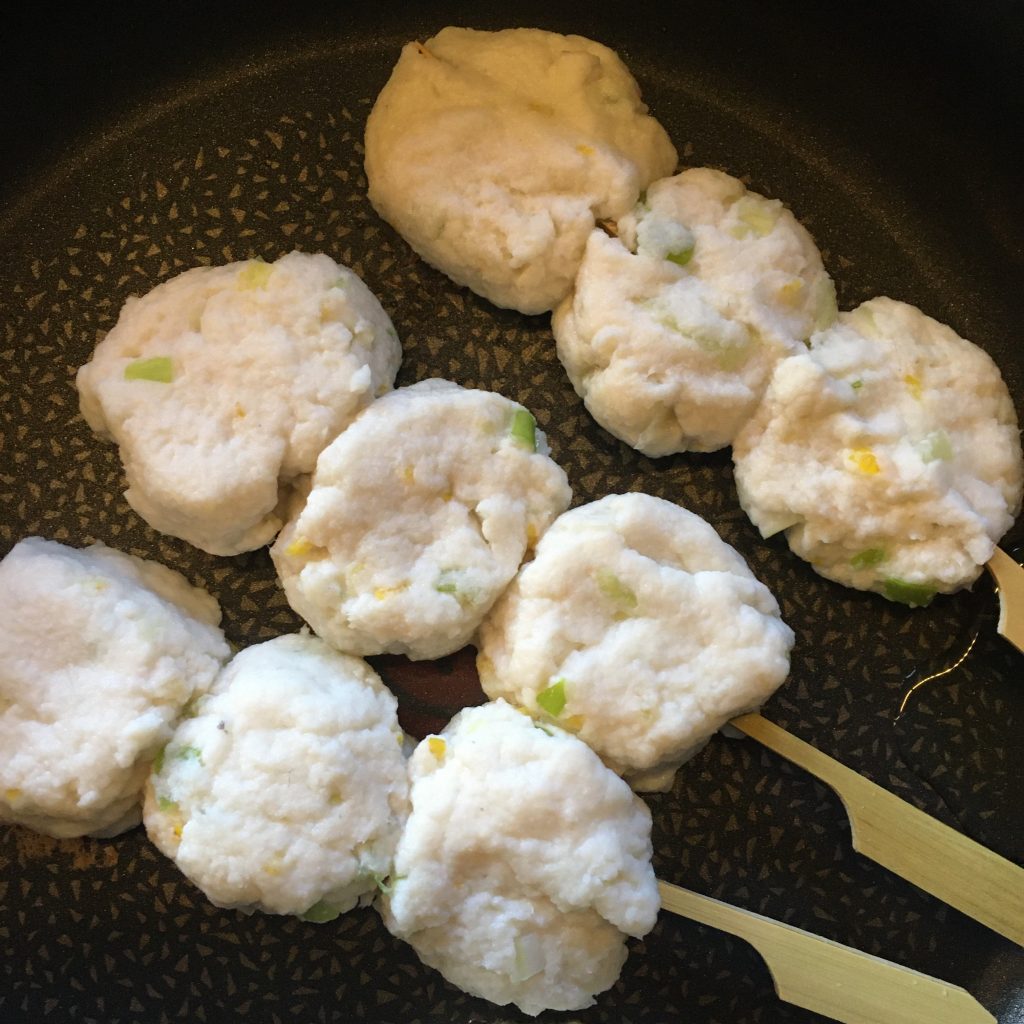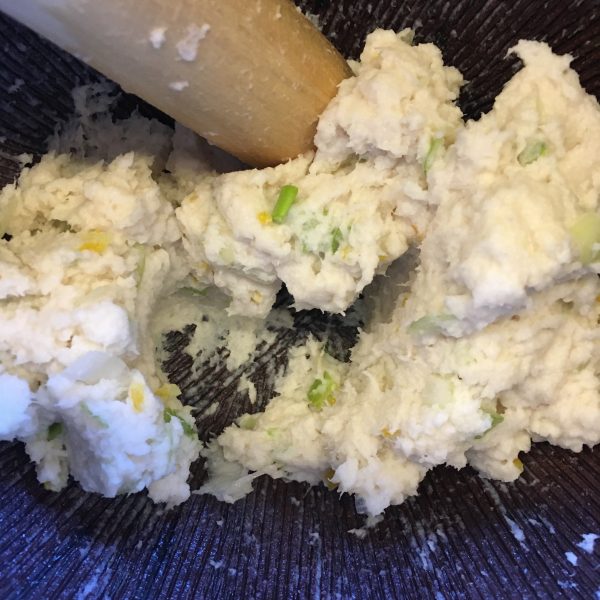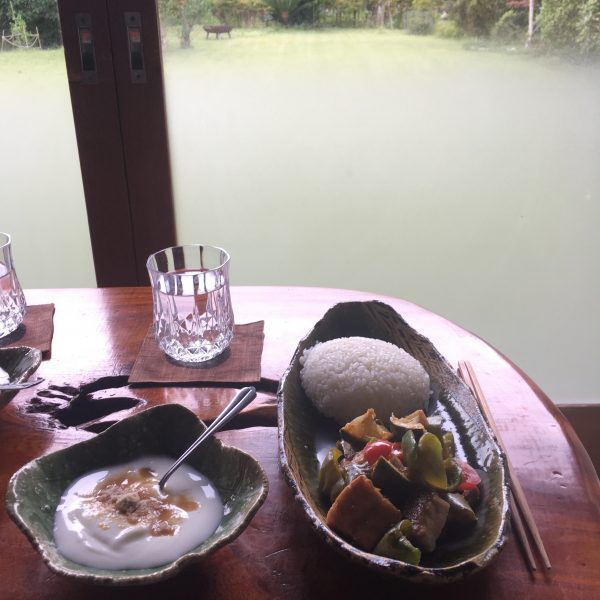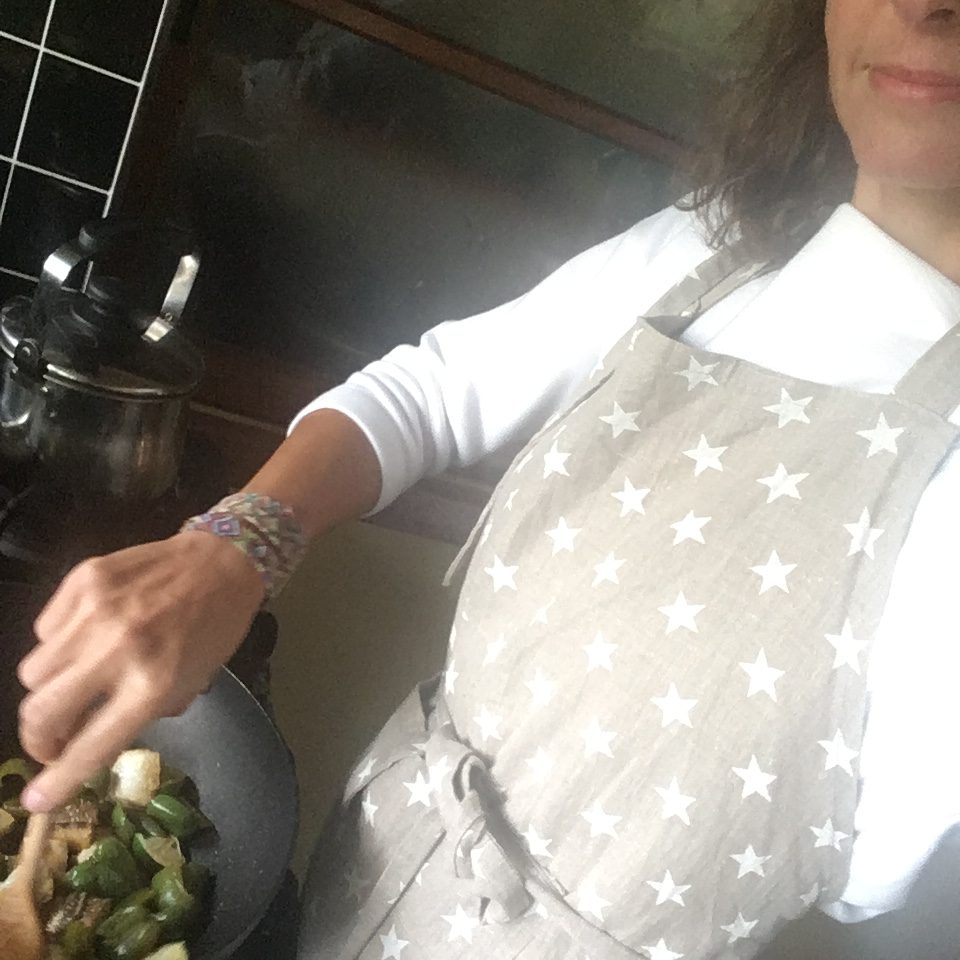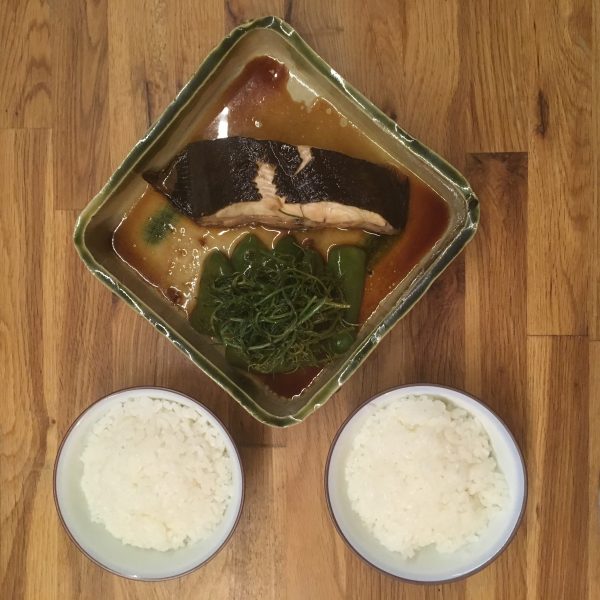What the heck?! you may think…
When you hear the word “surimi” you probably think about this disgusting white or orange industrial thing they sell in supermarket, I would definitely at first. I have never eaten any so I don’t know how it tastes like or feels like but my surimi looks quite different… it is made of ultra fresh fish flesh and based on cha-kaiseki classic recipe.
Indeed! That’s what surimi was before it turns into a super processed food: a classic Japanese recipe, made of local products and seasonal: cooked seasonal white fish flesh, without bones, egg white, and tororo (grated yam). It is used in cha-kaiseki cuisine to make fish cakes, fish balls, kamaboko 蒲鉾, satsuma age さつま揚げ, chikuwa 竹輪… I remember making surimi at my first cha-kaiseki class, with my mother. That’s shen I realized the meaning of “surimi” when seeing written in Japanese for the first time: すり身, which is literally squeezed body. Just like the sesame powder: surigoma すりごま, or the mortar used to make surigoma and surimi: a suribachi 擂鉢. The preparation is ultra simple and the result quite versatile. So here is one adaptation of the classic recipe to make some fish balls.
Surimi (2 servings)
- 100g of white fish (I used flounder)
- 1 egg white
- 2tbs of grated yam (optional)
- 1/4 leek
Cooked the fish as you like: poached, grilled… everything is fine. Remove bones, skin… In a mortar, squeeze the fish, add the egg white and continue stirring and squeezing to obtain a paste. Add the tororo (grated yam) if you use some and continue until the paste is homogeneous. That’s the raw surimi!
Wash and cut the leek in small pieces. Add to the mix. Make balls and cook them in a greased pan, I put them on skewers but it’s not mandatory. That’s it!!! Anc have a good

